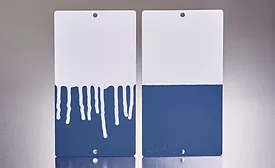Home » Rheology Modifiers
Articles Tagged with ''Rheology Modifiers''
The Impact of Insoluble Cellulose Fibrils
on the Rheology of Water-Based Acrylic Satin Paint Upon Tinting
Read More
Keep the info flowing with our eNewsletters!
Get the latest industry updates tailored your way.
JOIN TODAY!Copyright ©2025. All Rights Reserved BNP Media.
Design, CMS, Hosting & Web Development :: ePublishing









